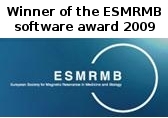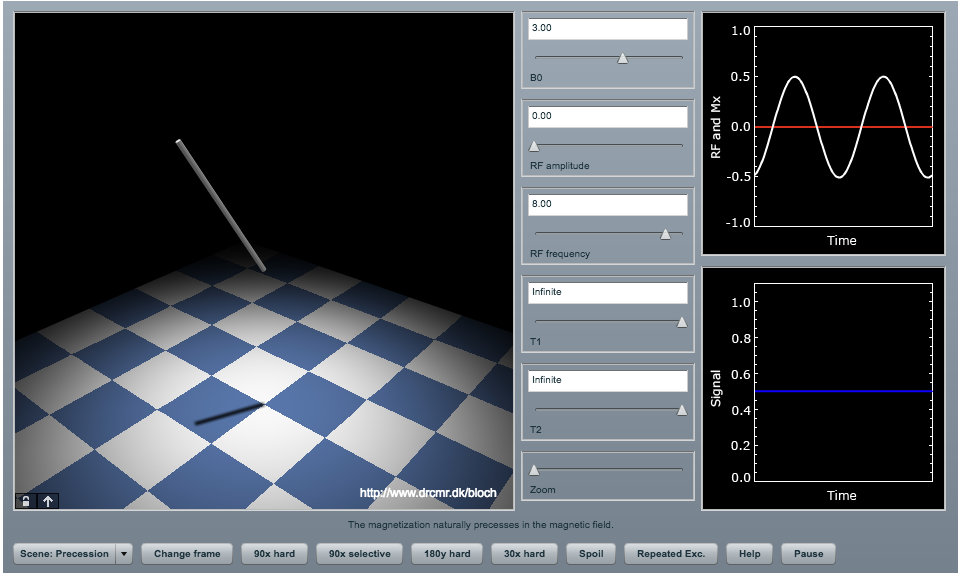 Click here or on the button to the right to start the Bloch Simulator directly in your browser. It is also available as an Android™ app.
Click here or on the button to the right to start the Bloch Simulator directly in your browser. It is also available as an Android™ app.
This free educational MRI and NMR sofware executes on any PC without installation of software. Click to immediately try it or watch a YouTube introduction to the software. Scroll down for information and software demonstrations.
Background
Magnetic Resonance Imaging (MRI) is a widely used scanning technique based on Nuclear Magnetic Resonance (NMR). When used for medical imaging, the tissue is magnetized by a strong magnetic field present in the scanner. Subsequently, the magnetization is manipulated using radio waves and field gradients to make the signal reflect parameters of interest. The dynamics are described by the Bloch equations.
It is challenging to learn the needed MR concepts. Fortunately, many of the basic aspects can be explored with the Bloch Simulator presented here. It can visualize MR experiments and their effect on the magnetization. It has proven very useful for demonstrations in lectures, for student exercises and for self-study.
If you are new to MR, you may first want to read a tutorial and experiment with another piece of software, the CompassMR simulator, that shows the very basics of Magnetic Resonance, using familiar compasses and magnets. When you have also understood the effects of "spin", causing precession around the field direction rather than vibration about this, you are ready to benefit from the Bloch Simulator presented here.
The Bloch simulator
 The Bloch simulator was written for educational purposes by Lars G. Hanson. The simulator is used to explore fundamental aspects of MRI such as precession, resonance, excitation, inhomogeneity and relaxation. Important concepts such as rotating frames, weightings, spoilers, spin-echoes, stimulated echoes and driven equilibrium can also be demonstrated using the program. Finally, the fundamentals of MR imaging can be shown, i.e. how the similarity between induced phase roll patterns and the structure of the imaged object is reflected in the MR signal. Some applications are documented at YouTube, and others here.
The Bloch simulator was written for educational purposes by Lars G. Hanson. The simulator is used to explore fundamental aspects of MRI such as precession, resonance, excitation, inhomogeneity and relaxation. Important concepts such as rotating frames, weightings, spoilers, spin-echoes, stimulated echoes and driven equilibrium can also be demonstrated using the program. Finally, the fundamentals of MR imaging can be shown, i.e. how the similarity between induced phase roll patterns and the structure of the imaged object is reflected in the MR signal. Some applications are documented at YouTube, and others here.
The first version of the software was described in RadioGraphics. The current JavaScript version developed by Lars G. Hanson runs in any modern browser, and offers much more functionality and speed than the older versions.
The simulator is useful during lectures for both technical and non-technical students (physicists, biomedical engineers, chemists, radiographers, MDs,...). It has also proven useful for student exercises. Examples are given on this website and in the software documentation which is distributed with the software (choose "Help" and "Challenges").
Above: Screen dump of the Bloch Simulator captured during a demonstration of precession. Field and relaxation properties are controlled via sliders,
whereas initial conditions and sequence events are triggered via menus and buttons.
Downloads
You can run the web version directly from https://www.drcmr.dk/BlochSimulator. However, you can also easily download a copy to put on your computer's Desktop, for example.



